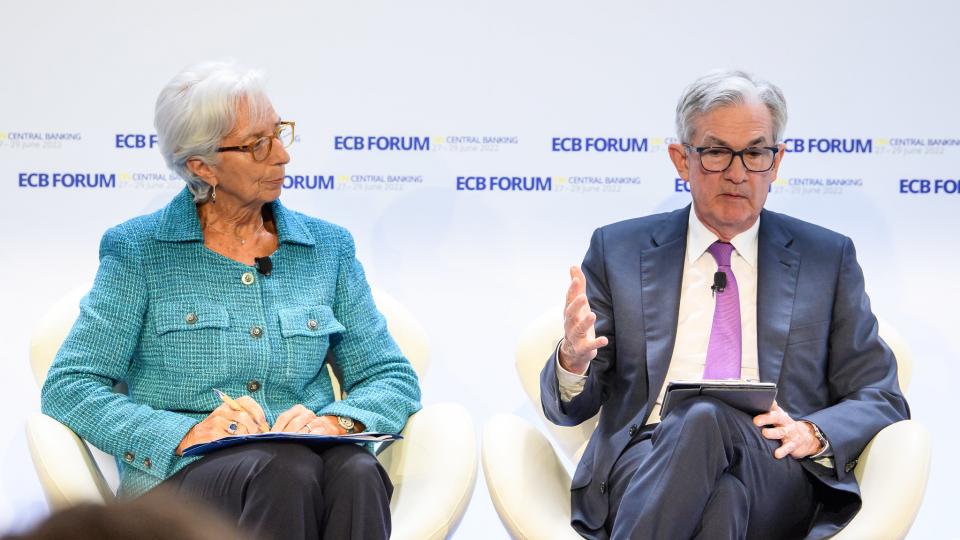The Fed could keep high rates longer than the ECB
Inflation is crucial, and, on this score, the risk is that the Fed will have to keep rates higher for longer; not the ECB.

>> What if FED will not cut rates this year?
Both the Fed and ECB provided important updates this week. Fed Chair Powell delivers the first of two testimonies to Congress on monetary policy, while the ECB holds its March policy meeting a day later.
It does not appear likely that either will change the policy narrative right now. And, if that’s the case, the market is likely to maintain the view that the two central banks will take almost identical paths when it comes to rate cuts this year. While that’s not necessarily a bad assumption, it is clear that there are risks that policy does not change in a simultaneous fashion, and it is also clear that these risks are not symmetric.
If Fed and ECB policy diverge this year, it is almost certainly going to be because the ECB pushes on with rate cuts at a more aggressive pace while the Fed cuts later and/or eases policy by less than the ECB – if at all. The respective strengths and weaknesses of the US and eurozone economies would seem to dictate this risk asymmetry. The US looks robust while the eurozone teeters on the brink of recession. This being said, economists’ expectations – and those of policymakers – judge that this growth gap between the US and euro zone will close.
The Bloomberg survey of analysts predicts that the 2%-point GDP advantage the US had over the euro zone last year will shrink to 1.6%-point this year, and then just 0.3% in 2025. Surely this would suggest the opposite to what we have been saying; that US ‘exceptionalism’ is more likely to be eroded and possibly shift the chances of more aggressive central bank easing towards the Fed, not the ECB.
But even if this growth gap closes somewhat, it will still be sufficiently wide to leave the possibility of a more hawkish monetary policy prescription being followed in the US rather than the euro zone. Of course, we can’t just base the risks around a perfectly symmetrical reduction in US and euro zone policy rates on growth.
Inflation is crucial, and, on this score, the risk is that the Fed will have to keep rates higher for longer; not the ECB. This relates primarily to the fact that the generation of inflation, and disinflation in the US and Eurozone has been very different, even if actual inflation rates have followed a similar trajectory. Euro zone inflation has primarily been a story around energy prices; both the surge in gas prices when Russia first attacked Ukraine just over two years ago, and the subsequent fall in energy prices thanks to things such as Europe’s ability to secure alternative energy supplies from countries other than Russia, the weak economy, and relatively mild winters. Of course, the rise in headline inflation has dragged wage inflation up, as usually happens, and that creates the risk of second-round effects.
>> ECB has fallen behind the curve again?
However, Mr. Steve Barrow, Head of the Standard Bank G10 Strategy, said that the inflationary and disinflation process would be different to the US, even though the US has similar wage issues. For the US, inflation was more dependent on demand and supply imbalances, first in goods and then in services relating to the pandemic. Recovering supply has helped pull inflation down but, coming back to the growth story, it is still not clear to us that any deceleration of demand is going to be sufficient to keep inflation sustainably close to the 2% target. In contrast, he thinks there’s a notable risk that eurozone inflation undershoots the target far sooner than many suspect.
What does all this mean for the pricing of financial assets? In Mr. Steve Barrow’s view, it means that positions should be biased in favour of more ECB easing and less Fed easing. Now admittedly, the two central banks started rate hikes in June and cut rates by around 100-bps in total this year. That’s the base case but, what’s important is that there’s a significant skew in the probability distribution that favours more ECB cuts and less from the Fed. As a result, it makes sense to show a continued bias for the US dollar over the euro, and to favour euro zone government bonds over treasuries.








